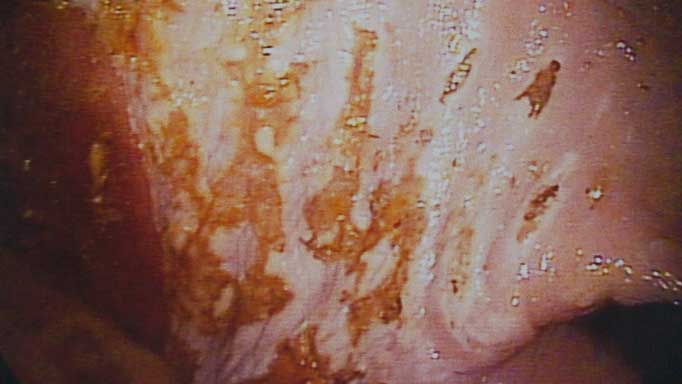Bone health is a perennial concern in the horse racing industry and, as a result, is the subject of widespread medical studies. Among the latest spate of research is a study examining a possible link between omeprazole and poor calcium absorption in thoroughbreds.
Conducted by Dr. Pagan and colleagues at the Kentucky Equine Research Center in Versailles, KY, the small-scale study attempted to determine the effect of omeprazole use on the digestibility of calcium. At issue is whether the administration of omeprazole interferes with the body’s ability breakdown and absorb dietary at levels necessary for maintaining healthy bones.
Drugs like omeprazole, or proton-pump inhibitors (PPIs), are commonly used to treat medical conditions like recurring gastric and duodenal ulcers, erosive esophagitis, and gastroesophageal reflux disease in humans.
PPIs work by inhibiting gastric acid secretion. Lower levels of acid not only allow ulcerated tissue to heal but prevents the development of new ulcers. Noticeable pain reduction and better gastrointestinal function usually occur as ulcerated areas heal.
However, according to multiple, long-term medical studies and experiments involving humans, PPIs can cause side effects such as increased the risk of muscle cramps and aches. There is also some evidence that PPI use in women may sometimes accelerate osteoarthritic changes.
When used over long periods of time, PPIs have been proven to significantly increase the risk of bone fractures and breaks in humans.
Additionally, when used over long periods of time, PPIs have been proven to significantly increase the risk of bone fractures and breaks in humans. In fact, the Mayo Foundation for Medical Education and Research (MFMER) specifically states that PPIs may increase the risk of having fractures of the hip, wrist, and spine – which is more likely in patients 50 years of age and older; for patients receiving high doses of this medicine, or; in patients using it for one year or more.
Other than humans, PPIs are most commonly used in horses. However, longitudinal studies into possible side effects on horses are far more limited.
On average, an estimated 50 to 90 per cent of all performance or athletic horses experience recurring gastric ulcers during a single competition season and are likely receive numerous doses of omeprazole as either a curative or preventative drug.
The highest frequency of gastric ulcers is found among racing thoroughbreds at approximately 80 to 93 per cent. Consequently, the highest rate PPI dosage is in thoroughbreds.

The highest frequency of gastric ulcers is found among racing thoroughbreds at approximately 80 to 93 per cent. (Rood & Riddle photo)
Ulcers in horses occur due to a combination of physiology, lifestyle and high-performance diet. The stomach of the horse is smaller compared to the stomach of other species and is designed to produce a steady flow of acid for constant grazing on high-fibre, low-protein grasses. Thus, infrequent meals can contribute to high stomach acidity as can high-grain diets that produce volatile fatty acids.
Stress – whether it be competition nerves, transportation or new housing and stablemates – can also trigger increased acid production. So too can the long-term administration of some non-steroidal anti-inflammatory drugs (NSAIDs).
The symptoms of equine ulcers can vary, but often range in severity from poor appetite and lethargy to decreased performance, colic-like pain and sudden fearful/aggressive behaviour. Diagnosis can only be definitively confirmed through gastric endoscopy.
Omeprazole products, such as GastroGard, are effective and easy to administer – usually requiring a single does per day.
Thus, in their study, Pagan and his colleagues decided to mimic this once-daily dosage cycle.
Using four mature thoroughbred geldings, Pagan’s study involved feeding timothy hay and unfortified sweet feed, vitamin supplement, and loose salt. All four horses were given 18 grams of supplemental calcium from either a limestone or a marine source. This diet was strictly maintained over a period of 12-weeks. The 12 weeks were then subdivided into four 21-day schedules, during which one of each of the four geldings was treated daily with a full tube of GastroGard.

Each of the horses in the study was treated daily with a full tube of GastroGard.
The blood from all four horse was pulled, tested and compared for calcium content during the time periods when they were treated with omeprazole and from the time periods when they did not receive omeprazole.
The results showed a definite decreased level of calcium digestibility of between 15.6 and 20.3 per cent – meaning omeprazole does indeed interfere with calcium absorption in horses. It is important to note that Pagan’s findings did not indicate a significant total calcium alteration during short-term administration of omeprazole, but rather the effect is most significant for the long-term administration in exercising horses.
In other words, the long-term administration of omeprazole for more than one year will very likely decrease bone density and increase fracture risk in racehorses.
Pagan’s study does not counsel against using omeprazole or set deadlines for length of time omeprazole should be used to treat gastric ulcers. Rather, he and his team have come up with important recommendations to help mitigate omeprazole’s effect on calcium absorption.
Ideally, horses on omeprazole (or PPIs) should have their calcium absorption levels tested and monitored. They should also have their calcium intake monitored. This means it should not be assumed that fortified feeds contain adequate or accurate estimations of calcium levels for horses on omeprazole.
To promote bone density in horses taking omeprazole daily calcium intake should be increased by around 10 grams per day while on omeprazole. And ideally, marine sources of calcium should be used since these sources seem to be absorbed much more effectively than limestone sources of calcium.


